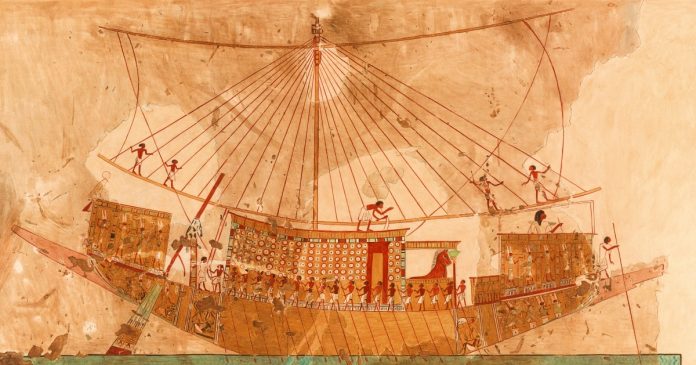Ancient Egyptian ships, particularly transport vessels, were vital for moving heavy cargos along the Nile River and its Delta. Excavations at the submerged city of Thonis-Heracleion have uncovered remarkable evidence of these vessels. Notably Ship 17, “the Baris”, dated via ceramics and radiocarbon to 804–416 BCE. Ship 17 closely matches a description of a baris (a term for Ancient Egyptian cargo ships) by Herodotus’. The boat is one of over 60 vessels excavated at the submerged port of Thonis-Heracleion. This article explores the construction techniques, design features, and navigational roles of these ships, drawing on detailed archaeological findings. It also assesses the likelihood that ancient Egyptians scaled up transport vessels. Obelisk ship tomb reliefs and inscriptions indicate that ancient Egyptians built vessels for transporting monumental cargos, despite the lack of direct archaeological evidence.
Construction Techniques of the Baris
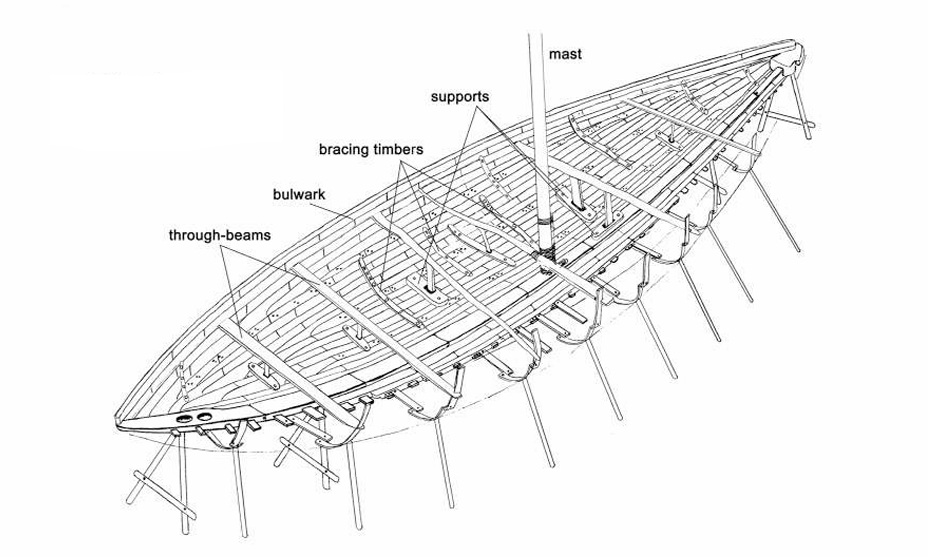
Ship 17, distinctive baris style construction highlights sophisticated methods tailored for Nile cargo transport. Built primarily from acacia wood, its hull featured thick, short planks (average length 1.92 meters, thickness 14.7 centimeters) arranged in a brick-like pattern, a technique called imbrication. These planks, joined with long tenons (up to 1.99 meters), formed a robust shell-first structure. Unlike some Egyptian vessels designed for ceremonial or flexible use, which employed lashing techniques.
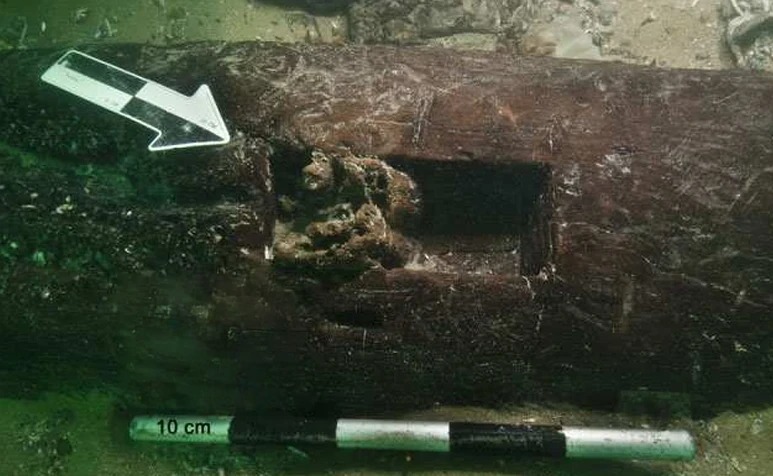
Ship 17, a cargo freighter, relied on mortise-and-tenon joints with wedged and pegged tenons for enhanced stability. Vegetal material, likely papyrus, sealed seams from within, a luting technique that ensured watertightness without external caulking.
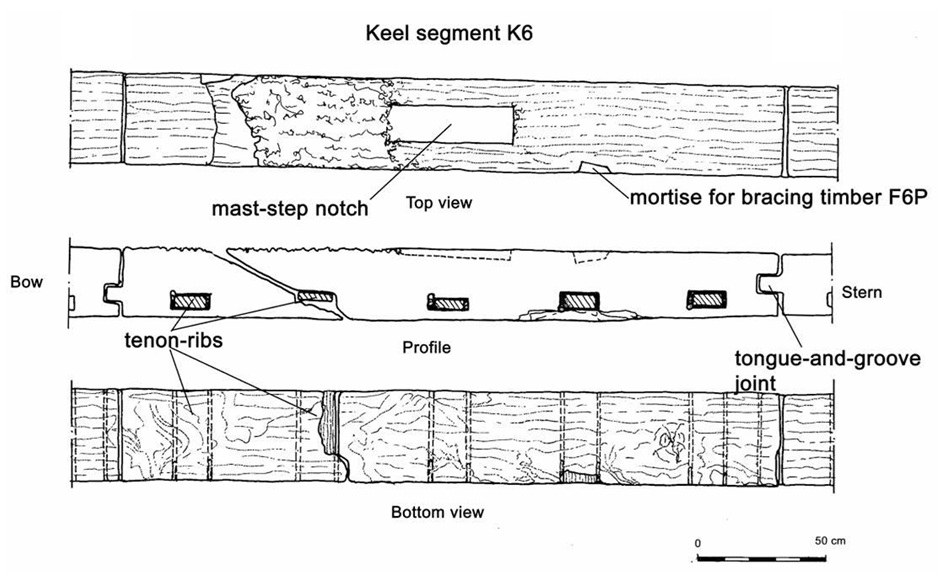
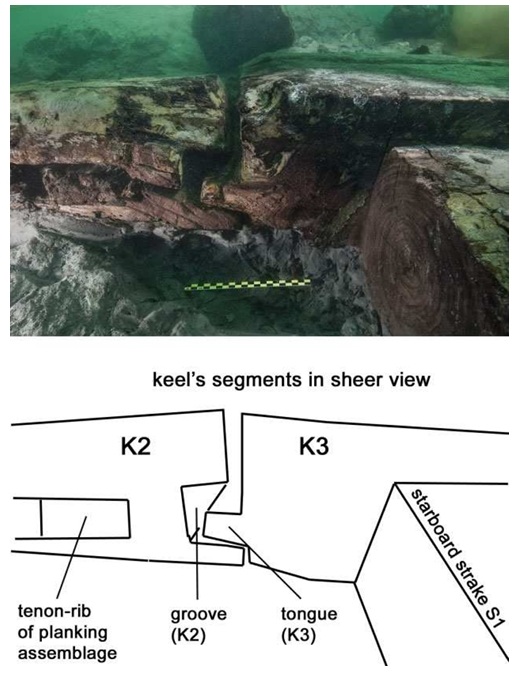
The ship’s keel, composed of 12 acacia segments, provided longitudinal strength, projecting slightly inside the hull. Through-beams, made from naturally curved acacia branches, reinforced the transversal structure, supported by stanchions and reused planks. This frugal use of materials, including knots and fissures in the wood, reflects a practical approach suited for cargo vessels.
Image Source: The International Journal of Nautical Archaeology (2014)
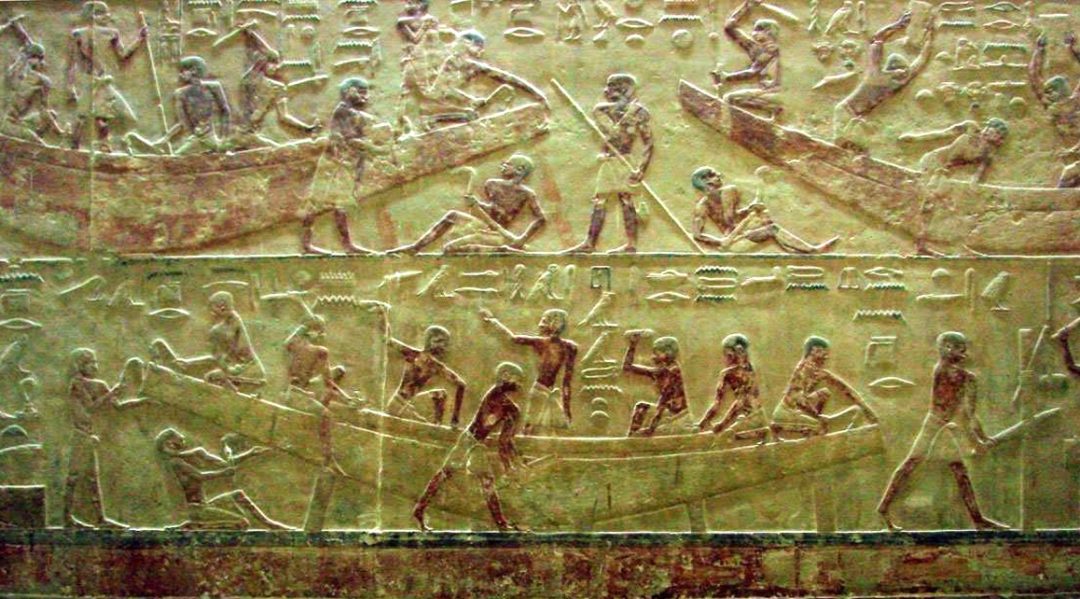
Tomb reliefs from the Old Kingdom, such as those in the tomb of Ti, depict similar techniques, with workers cutting long tenons and shaping planks, suggesting continuity in shipbuilding traditions.
Ship 17’s Baris Ship Design
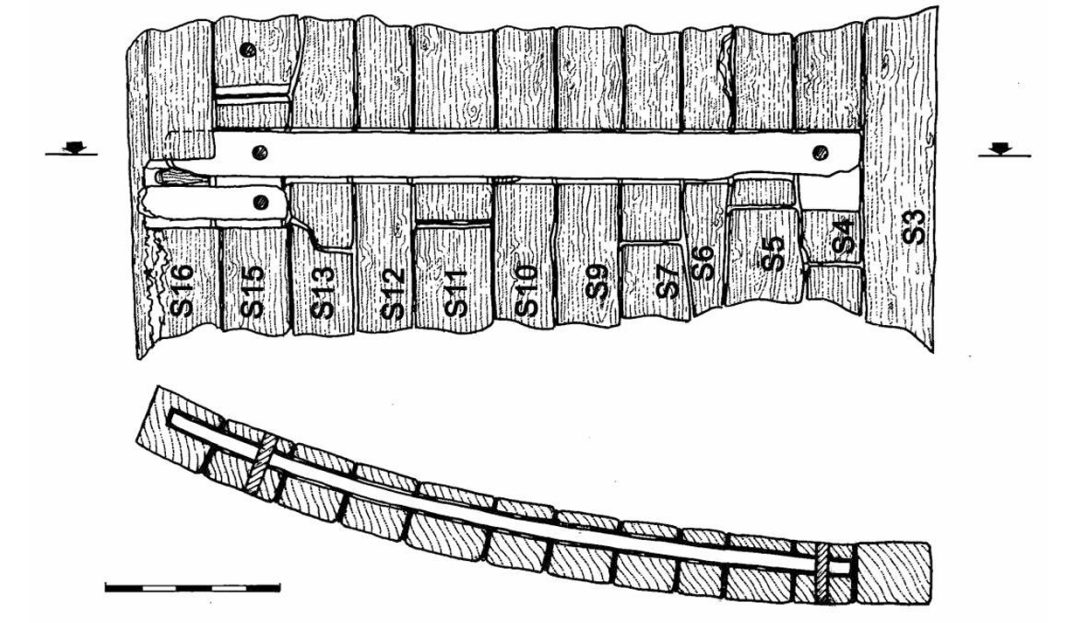
The design of Ship 17, a Nilotic freighter, was optimized for the Delta’s shallow waters and sandbanks. Measuring approximately 27–28 meters long with an 8-meter beam, it had a flat bottom and shallow draft (1.6 meters), ideal for riverine conditions. Its crescent-shaped hull, with pronounced overhangs at bow and stern, enhanced maneuverability. It had an axial rudder, passing through two shafts in the keel, which allowed for precise steering, a feature corroborated by Herodotus’ account of the baris. A centrally positioned mast, supported by a notch in the keel, likely held a papyrus sail, though no rigging traces remain.
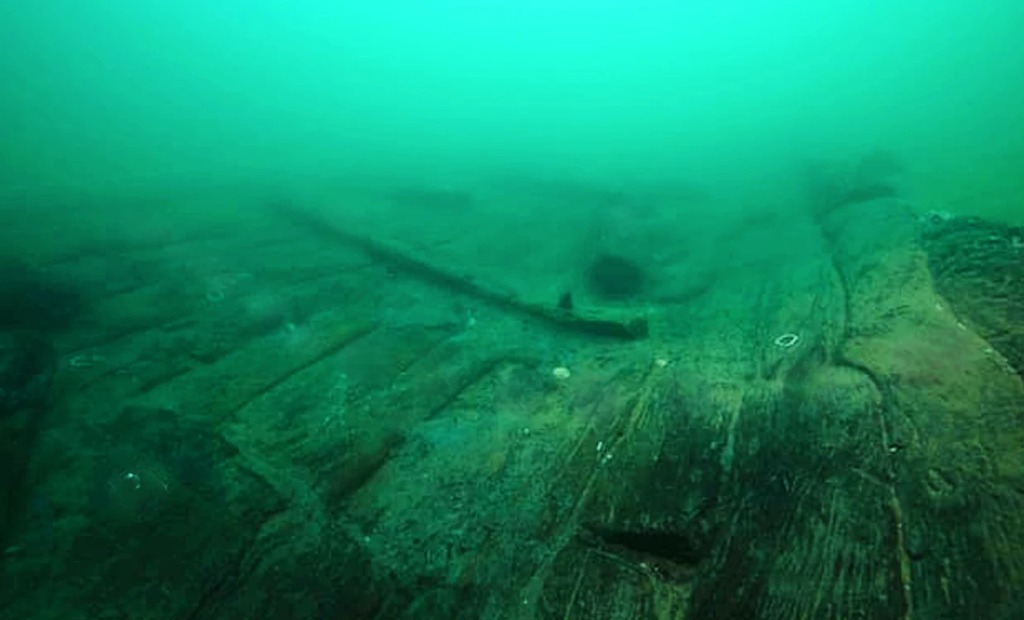
Herodotus described baris planks as two cubits long (about 1.04 meters), shorter than Ship 17’s average. This discrepancy suggests Ship 17 was a larger variant, as Herodotus noted baris sizes varied. The ship, one of many baris cargo ships unearthed at Thonis-Heracleion, features tenon-ribs that form internal composite frames for transversal strength, a design common from the New Kingdom to the Late Period. Seen also in a Late Period vessel from Mataria, this construction reflects Egypt’s enduring shipbuilding tradition for Nile Delta transport.
Modern Analysis of Ship 17
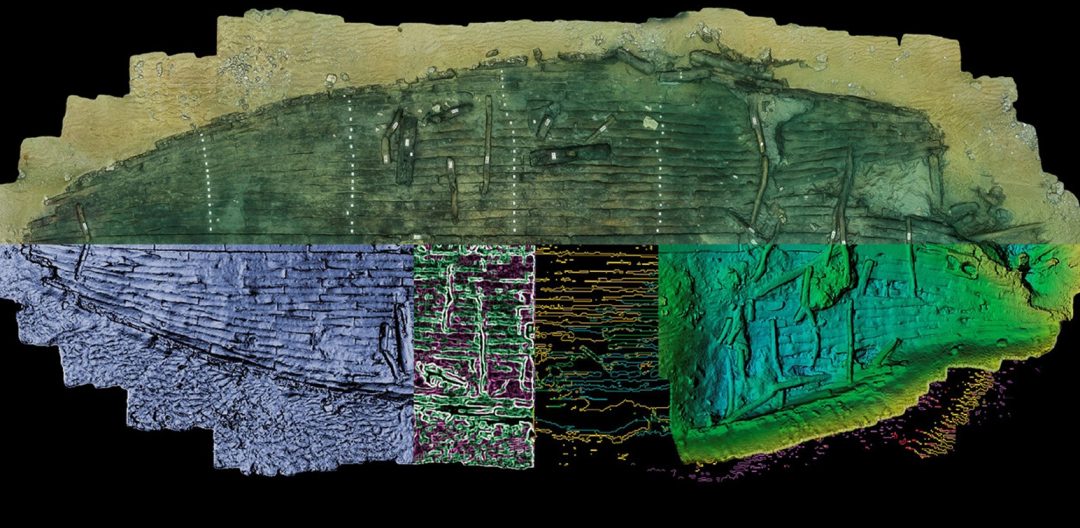
Ship 17 was analyzed using advanced 3D digital reconstruction to reveal its construction and cargo capacity. Excavated from 2009–2011 under 50 cm of sand and clay, 70% of its 28-meter hull was uncovered. The 3D model, built from detailed measurements and photomosaics, shows a flat-bottomed freighter with a 151-ton displacement, 1.6-meter draft, and 112-ton cargo capacity. Structural analysis, likely using finite element methods, confirmed its ability to carry heavy loads, matching Herodotus’ claim of baris ships hauling “many thousands of talents” (Historiae 2.96).
Evidence from Tomb Reliefs
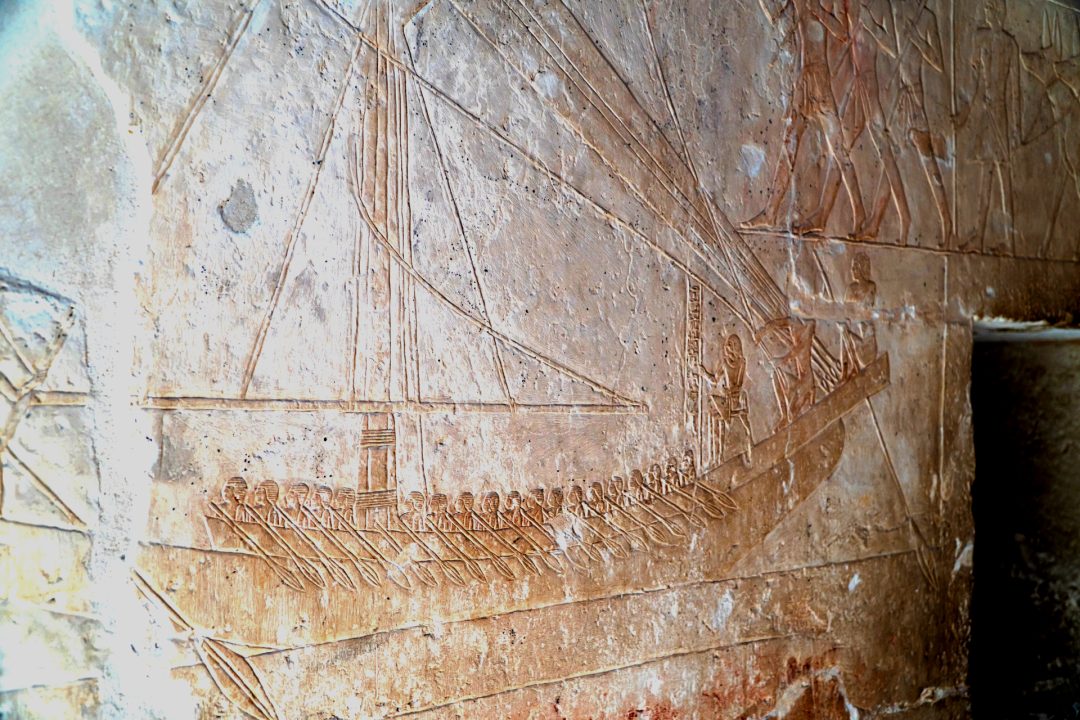
Tomb reliefs across ancient Egypt’s history vividly illustrate the advanced shipbuilding techniques behind baris cargo vessels. Ship 17, one example of many unearthed at Thonis-Heracleion. These boats, spanning the Old to New Kingdoms, demonstrate a continuous tradition of robust ships capable of transporting heavy cargos, including megalithic blocks. In the 5th Dynasty tomb of Ti at Saqqara (circa 2500 BCE), shipbuilders carve long tenons and shape planks with adzes, mirroring Ship 17’s tenon-rib construction.
Workers use rope trusses to support crescent-shaped hulls, a method likely applied to baris freighters. Similarly, the tomb of Tomb of Mereruka (6th Dynasty) depicts ships with axial rudders, a feature of Ship 17, proving early mastery of Nile navigation.Middle Kingdom reliefs in Khnumhotep’s tomb at Beni Hasan (circa 1900 BCE) show planks assembled in a staggered, brick-like pattern, echoing Ship 17’s hull and Herodotus’ baris description. This pyramidal assembly, starting from the hull’s center, highlights Egypt’s enduring shipbuilding precision.

New Kingdom reliefs at Deir el-Bahri (Hatshepsut, circa 1470 BCE) depict a 60-meter barge carrying two obelisks, each around 343–375 tons, towed by 27 boats, proving Egypt’s ability to transport nearly 750 tons of granite. Ineni’s tomb (Thutmose I, circa 1500 BCE) records a 63-meter barge for obelisks, its layered planking akin to baris designs. Rekhmire’s tomb (18th Dynasty, circa 1450 BCE) shows cargo ships for Punt expeditions, while Horemheb’s tomb at Saqqara (18th Dynasty) portrays barges hauling timber, their sturdy build supporting megalithic transport. These reliefs affirm Egypt’s enduring baris tradition, with Ship 17 as one example of ships built for monumental cargos.
Khufu’s Solar Barges
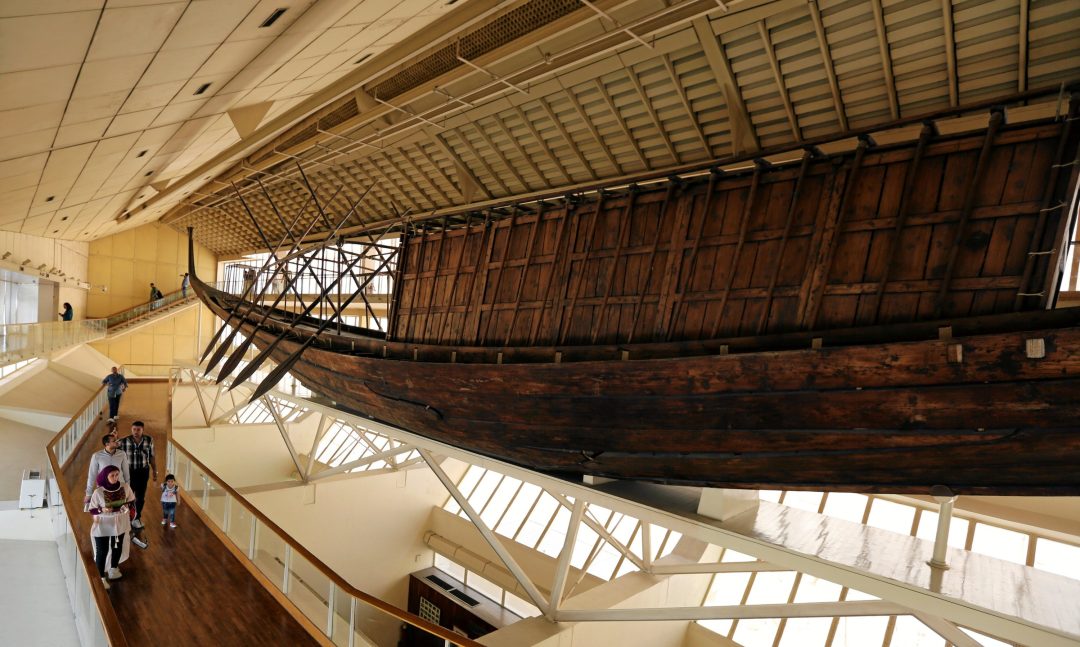
Khufu’s solar barges, excavated in 1954 near the Great Pyramid (circa 2500 BCE), highlight Old Kingdom shipbuilding’s capacity for heavy loads, alongside the baris-style tradition of Ship 17. Likely ceremonial for the pharaoh’s afterlife, these 43.4-meter-long, 5.9-meter-wide vessels used cedar and acacia planks (10–14 cm thick) with mortise-and-tenon joints and rope lashings (Ward, 2000, p. 47–50). Radiocarbon dating confirms their 4th Dynasty origin (2600–2500 BCE) (Mark, 2012, p. 84). Their flat-bottomed hulls, suited for Nile routes, parallel baris-style cargo ships depicted in Ti’s tomb (5th Dynasty, 2500 BCE) hauling goods.
While Khufu’s barges were symbolic, contemporary baris-style vessels moved megaliths, as Weni’s records note granite transport from Aswan (Breasted, 1907, §324). Unas’ causeway reliefs (5th Dynasty) show similar freighters carrying granite columns. This dual tradition—ceremonial and cargo—enabled later baris ships, like Ship 17 with its 112-ton capacity, and Hatshepsut’s barge hauling 343–375-ton obelisks (1470 BCE). Ship 17, among Thonis-Heracleion’s 60+ wrecks, upholds this enduring ability, countering claims Egyptians lacked ships for monumental cargos.
Traditional and Technological Significance
Ancient Egyptian baris ships, like Ship 17, were built to haul heavy cargos across the Nile, from grain to megalithic blocks. Ship 17’s rugged build, with acacia planks and tenon-ribs, mirrors Egypt’s enduring shipbuilding tradition for heavy cargo, consistent from the Old Kingdom to the Late Period. This shipbuilding tradition, seen in reliefs from Ti’s tomb (2500 BCE) to Hatshepsut’s obelisk barge (1470 BCE), produced flat-bottomed freighters with axial rudders, perfect for the Delta’s shallow waters.
These ships moved colossal loads, proving Egypt’s ability to transport megaliths long before the Late Period. Baris vessels, linked cities and powered trade, from local routes to Mediterranean ports. Reliefs and wrecks like Thonis-Heracleion’s fleet show Egypt’s shipbuilders mastered heavy-duty transport.
Come back to AncientHistoryX for more insights

